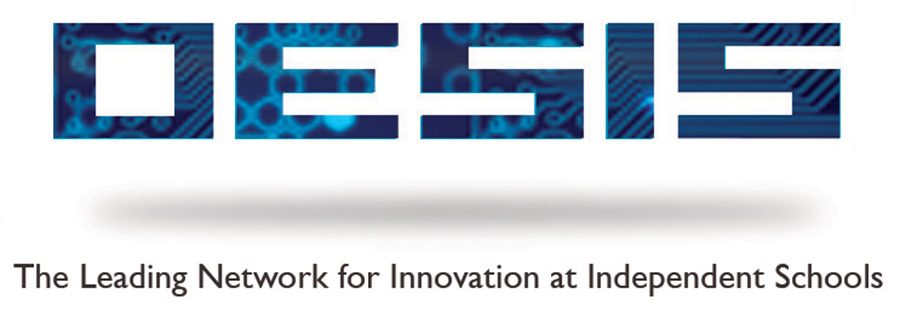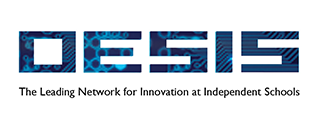
~ 36 minutes
Now that we have defined what cross-curricular competencies are, let’s look at some examples of what they look like and where it makes sense to begin considering how to include them in your work. Some resources in this course will also explain how CBL can change the experience of school for both faculty and students.
Often, the term competency-based learning is used when the focus is on standards and more personalized approaches to supporting students to mastery of them. In this course, though, when we reference competencies, we are NOT referring to standards. Competencies are the larger-grain, transferrable knowledge, skills and abilities that students need to engage in complex work.
WATCH the following videos:
![]() Where is the best place to start with CBE? (2019) | Tara Quigley and Sanje Ratnavale (6.23 minutes)
Where is the best place to start with CBE? (2019) | Tara Quigley and Sanje Ratnavale (6.23 minutes)
In this video, Tara and Sanje discuss some of the smallest ways in which one can begin to explore competency-based learning in the classroom. Tara suggests that a teacher begin by making sure they have a clear set of learning outcomes for their course.
![]() Development of Cross Curricular Competencies | Chadwick School (CA) (6.26 minutes)
Development of Cross Curricular Competencies | Chadwick School (CA) (6.26 minutes)
Notice in this video, how Chadwick School (CA) used the process of developing and implementing core competencies to articulate what they value and what they want students to know and be able to do. They used it as a process to unite the faculty in creating programs that all point in the direction of their mission and vision.
![]() How Should We Assess Competencies Excerpt | Devin Vodicka (4.38 minutes)
How Should We Assess Competencies Excerpt | Devin Vodicka (4.38 minutes)
In this excerpt, Devin and Tara discuss the two different types of outcomes that teachers and schools assess. The first is a binary one, that he calls “ladders” because they are sequential and require a progression to master the topic. This type of knowledge is important and necessary in schools. However, equally as important is “knot” learning that is not binary and allows for multiple approaches. Mr. Vodicka speaks to the importance of providing opportunities for students to grapple with and learn from both types of learning.
Choose two of the following articles to read:
As you do so, consider the following questions.
- What are you measuring in your classes?
- Are the grades and feedback you are currently providing for your students helping them develop what is most important for their futures?
 How Competencies Influence Teacher Practice | Aurora Institute (10 minutes)
How Competencies Influence Teacher Practice | Aurora Institute (10 minutes)
“Competencies are a model for learning objectives that are intended to expand the definition of academic success and encourage students to authentically apply their knowledge. My research found that using competencies helped teachers sharpen their practice, teach skills (in addition to academic knowledge), align their teaching with enduring educational aims, and facilitate and differentiate learning.”
 What IS the difference between competencies and standards? | reDesign (10 minutes)
What IS the difference between competencies and standards? | reDesign (10 minutes)
“Competencies sit above standards in terms of grain size. They are organized around specific learning outcomes that have meaning and importance in the world. For example, a competency might be defined as the ability to communicate with clarity and purpose, construct an evidence-based argument, or collaborate with others. In this sense, competencies tend to encompass an interrelated set of skills, knowledge, aptitudes, and/or capacities.”
 Five Big Ideas for Learner-Centered Competency Framework Design | Aurora Institute (12 minutes)
Five Big Ideas for Learner-Centered Competency Framework Design | Aurora Institute (12 minutes)
“We are constantly reflecting on and refining our competency framework design practice, and over the last ten years our work has evolved in significant ways. In this post, I synthesize five big ideas for learner-centered competency framework design, along with a set of question prompts that can serve as equity filters related to each big idea.” These five big ideas are described in this article.
 Multiple Pathways to Competency-Based Education? | Aurora Institute (8 minutes)
Multiple Pathways to Competency-Based Education? | Aurora Institute (8 minutes)
“Competency education is a paradigm shift – it is a change in the underlying assumptions. This means there has to be a way to shake off the old assumptions, which is tricky to do when all of us have grown up in the traditional education system. The goal of sorting students has to be replaced with nurturing success. Time isn’t a constraint but a resource. The fixed mindset has to be replaced with a growth mindset. A compliance culture has to be replaced with an empowered one. Hierarchical decision-making practices have to be replaced by inclusive ones with leaders using distributive leadership strategies. Educators are no longer teaching the curriculum; they are teaching children.”
 How should we assess competencies? | Devin Vodicka, Intrepid ED News (5 minutes)
How should we assess competencies? | Devin Vodicka, Intrepid ED News (5 minutes)
“We can no longer rely on letter grades and seat time as proxies of learning — we are at a stage where evidence of mastery learning is clearly a better way to represent competence. A competency-based, learner-centered approach provides opportunities to extend beyond traditional academic outcomes and take into account alternative measures of progress, including habits and skills in social-emotional learning domains that will be essential for lifelong learning.“

